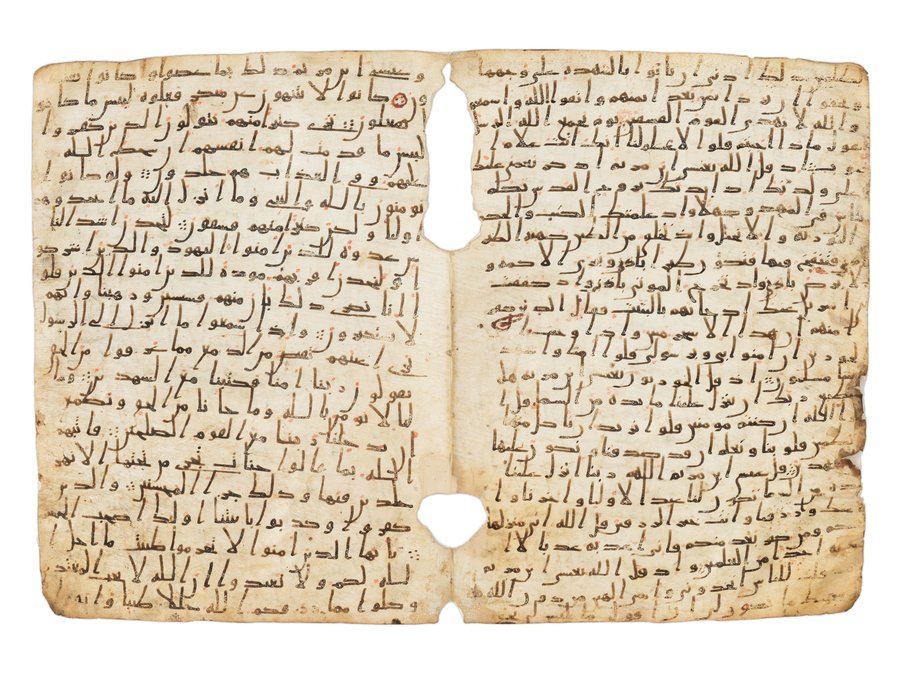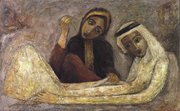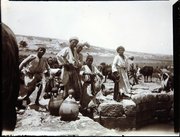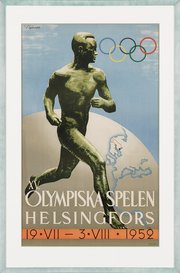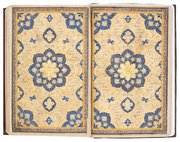
Bifolio of a Qur'an in hijazi script
Museum of Islamic Art
- Title:
- Bifolio of a Qur'an in hijazi script
- Production place:
- Arabian Peninsula
- Date:
- 600 - 733
- Period:
- 7th century CE
- Title:
- Bifolio of a Qur'an in hijazi script
- Production place:
- Arabian Peninsula
- Date:
- 600 - 733
- Period:
- 7th century CE
- Material:
- Parchment, Ink
- Technique:
- Calligraphy
- Dimensions:
- 33.6 × 48.1
The first Qur’ans were copied onto parchment in a vertical format in the so called hijazi script, a reference to the Hijaz region where Mecca and Medina are located. Until recently, researchers believed that these folios, produced by the second half of the 1st century AH (end of the 7th century CE and early 8th century CE), were made in this region. However, it is equally likely that they were copied in other regions of the newly conquered territories. This bifolio features between 22 to 28 lines per page, written in a clear brown hijazi script, highlighted with red vocalization marks that were added at a later stage. A few diacritical markers were noted on some letters, in addition to end of verses indicated by groups of dots. This type of vertical format was supplanted by a landscape format known as the “Italian format”, written in kufic script, with just a few lines per page in a far larger script than was the case for folios in hijazi. These were made primarily for practical reading use; presumably their main purpose was to record the text in a format which made it easier to memorise.
